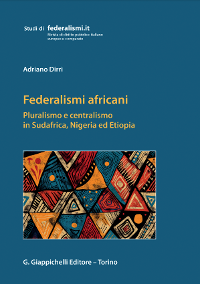
FOCUS - Reflective Judiciary N. 5 - 09/11/2018
Unequal Opportunities: Education Pathways to the U.S. Judiciary
This paper is about diversity in federal and state courts in the United States. My main argument is that we should promote a judiciary that is reflective of the society of which it is a part for three reasons: first, because in doing so, we gain critical awareness of barriers to judicial service; second, because in doing so, we are also promoting access to resources, education and opportunities in the legal profession; and third, because it is possible (although not automatic) that a reflective judiciary will broaden the range of experience and perspective on the matters involved in the cases themselves. I will focus primarily on the first and second of these points, with some attention to individual judges in the paper’s closing section. In the U. S., members of the bar become judges usually after a distinguished career in practice or the academy. There are no civil service exams to enter the judiciary. Under the U.S. Constitution, federal (i.e., Article III) judges reach the federal bench via presidential nomination and senatorial confirmation. States systems are separate. State judges attain their positions in various ways. The formal routes include election (partisan or nonpartisan), gubernatorial appointment, legislative appointment, or nomination by commission, otherwise known as the merit system. The customary understanding of merit selection includes a nonpartisan or bipartisan commission that nominates a limited number of individuals to the executive when a judicial vacancy occurs, for executive appointment, with continuing tenure on the bench dependent upon a subsequent retention election. In such elections, the judge is unopposed on the ballot; voters decide whether or not to retain the judge. Some state judges are elected directly by the public, like any other candidate for public office in a partisan election. Diversity of the bench is directly related to how judges are appointed and, especially, the candidate pools from which they are appointed. Therefore, the consequences of a broadly conceived sense of diversity will not only foster judicial legitimacy, but also the most fundamental values inherent in our society—democracy, fairness and, as I will especially argue below, access to education at all levels (primary, secondary, college and law school). For the judiciary to be truly reflective of society, candidate pools must also be reflective. For this to occur with regularity, access to education is necessary at all levels of society. Education is the primary pathway to the bar and ultimately, the judiciary. A reflective judiciary is, therefore, like the canary in the mine—an indicator of access to education and to professional opportunity within the legal profession. When barriers exist to education, barriers exist to the judiciary as well. I could not, therefore, disagree more with Chief Justice Roberts than when he sought to bar the use of race to determine which public schools certain children may attend. He stated: "The way to stop discrimination on the basis of race is to stop discriminating on the basis of race." I disagree, because the evidence shows that various creative policy initiatives are necessary if we are to attain a non-discriminatory society through educational opportunity. In part one of this paper, I will discuss various pathways to the federal and state judiciaries--gateways and impasses (“bottlenecks”). I will emphasize access to education and the role education plays as a gateway. As we shall see, progress has been made in the United States in the decades since the Civil Rights Act of 1964, but barriers persist. This is evident in the patterns of minority and female participation on the federal and state appellate bench: appointment favors men over women, and whites over minorities. We will look within those patterns to identify further gateways and bottlenecks. In part II, we then look to the human side of the law –namely judges-- and discuss, briefly, illustrious judicial careers whose existence is owed to diversity in the federal judiciary… (continues)
NUMERO 21 - ALTRI ARTICOLI
-
ITALIA - DOTTRINA
Le potenzialità dell'azione giuridica comunale nello sviluppo prospettico della normativa costituzionale sulle formazioni sociali
ITALIA - DOTTRINAIl regionalismo differenziato alla luce delle recenti evoluzioni
ITALIA - DOTTRINAThe European Banking Authority in light of the CJEU jurisprudence
-
ITALIA - DOTTRINA
Tempo e potere di riesame: l'insofferenza del giudice amministrativo alle 'briglie' del legislatore
ITALIA - DOTTRINACompetenza del giudice ordinario e tardività dell’eccezione di arbitrato
-
ITALIA - DOTTRINA
Uguaglianza, diritti umani e vincoli di bilancio
ITALIA - DOTTRINALe strategie macroregionali dell'Unione europea
Execution time: 82 ms - Your address is 216.73.216.135



 Registrati
Registrati Login
Login
 Territorio e istituzioni
Territorio e istituzioni Africa
Africa Osservatorio di Diritto sanitario
Osservatorio di Diritto sanitario Osservatorio sul diritto elettorale
Osservatorio sul diritto elettorale Human Rights
Human Rights Storico focus
Storico focus Riforme istituzionali e forma di governo
Riforme istituzionali e forma di governo Lavoro Persona Tecnologia
Lavoro Persona Tecnologia America Latina
America Latina Osservatorio Trasparenza
Osservatorio Trasparenza Scarica il Documento integrale
Scarica il Documento integrale STUDI FEDERALISMI
STUDI FEDERALISMI





30/05/2025
14/04/2025
24/01/2025
01/11/2024
30/08/2024
29/07/2024
03/06/2024
15/03/2024
29/12/2023
04/08/2023
05/06/2023
30/01/2023
09/12/2022
28/10/2022
28/03/2022
02/02/2022
17/01/2022
12/02/2021
18/01/2021
13/11/2020
12/10/2020
17/06/2020
01/06/2020
18/05/2020
04/05/2020
24/04/2020
10/04/2020
27/03/2020
10/04/2020
25/10/2019
27/09/2019
15/04/2019
25/03/2019
14/01/2019
14/12/2018
16/11/2018
09/11/2018
14/09/2018
03/09/2018
22/06/2018
23/02/2018
27/11/2017
02/10/2017